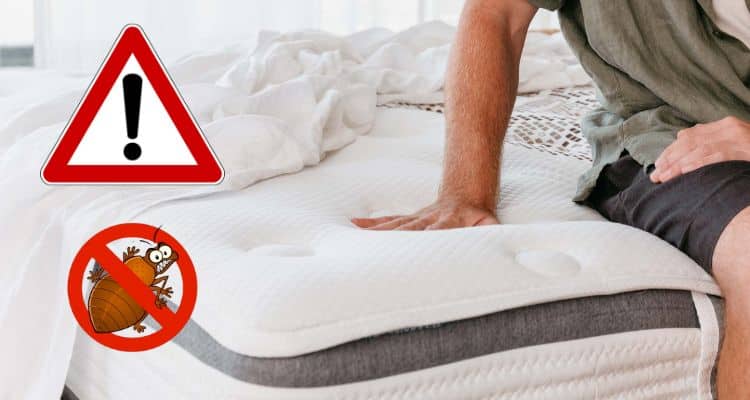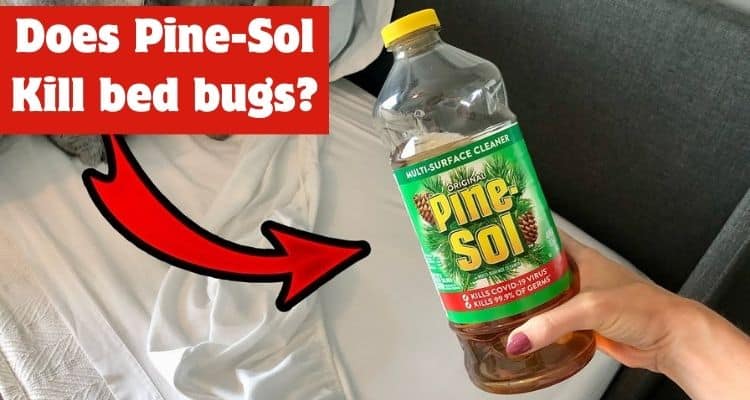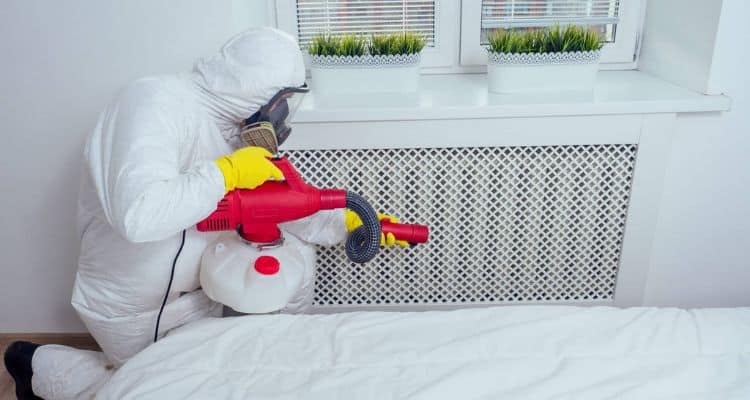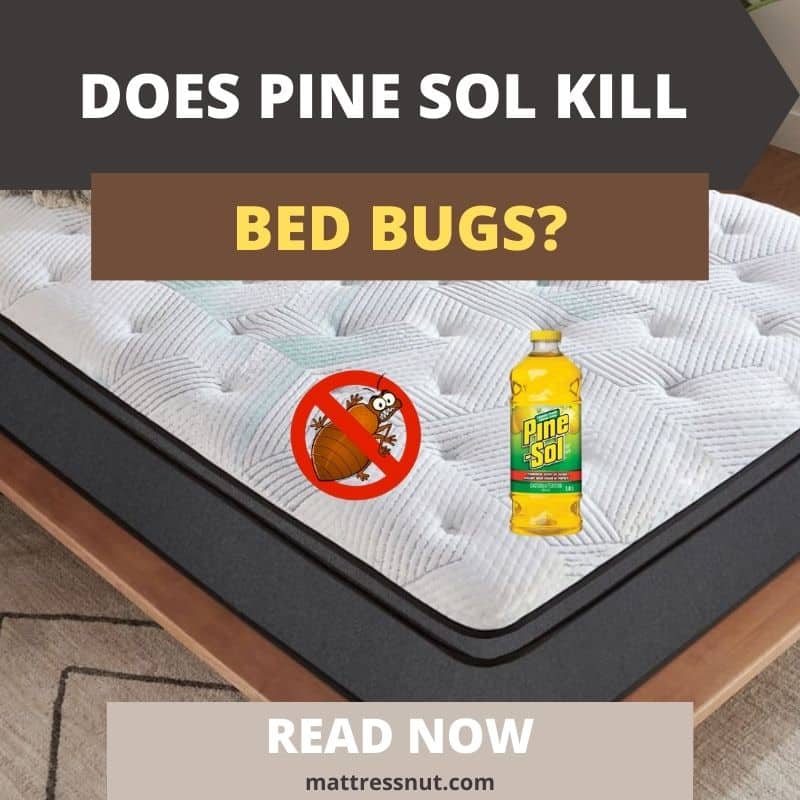Bed bug infestations have persistently plagued homes and businesses worldwide, posing a relentless challenge for homeowners and pest control professionals. These tiny insects are notorious for their hiding ability in cracks and crevices, making eradication a formidable task. As a result, the quest for effective and safe bed bug control methods remains a top priority.
This article delves into a promising solution: investigating Pine-Sol as a potential bed bug killer. Pine-Sol, a typical household cleaner, has garnered attention due to its powerful cleaning properties and distinctive pine scent. But can it also prove effective in exterminating these resilient pests?
Understanding Bed Bugs
Tiny nocturnal insects or bed bugs have gained popularity for their unpleasant presence in homes and businesses throughout the globe. These stealthy bugs are skilled at concealing even the smallest gaps and fissures and feast on human blood. They are incredibly hard to eradicate because of their enigmatic behavior and quick reproduction rates.

Beyond the itching bites’ agony, bed bugs seriously affect health and finances. Their edges can irritate the skin, trigger allergies, and even lead to emotional discomfort. Infestations frequently come with worry and sleep problems, compromising the general health of the people impacted.
Additionally, bed bug infestations can have a significant financial impact due to the high cost of treatment, the need to replace contaminated items, and potential legal complications.
Pine-Sol: Composition and Uses
A popular home cleanser noted for its characteristic pine aroma is called Pine-Sol. Water, surfactants, and pine oil comprises its main constituents. Pine-Sol gets its distinctive scent and cleaning strength from pine oil, made from the pine tree’s resin.
Pine-Sol is a popular home cleanser for cleaning and disinfecting various surfaces, including floors, counters, and bathrooms. It is a popular choice for routine cleaning duties because of its versatility.
Due to its pungent smell and the notion that it may possess insecticidal qualities, Pine-Sol is thought to be a viable bed bug remedy. Although some people have tried using it as a do-it-yourself bed insect control method, its efficacy and safety are yet unknown.
Does Pine-Sol Kill Bed Bugs?
People have made claims and shared anecdotal stories about Pine-Sol’s potential effectiveness against bed bugs. Some believe its strong scent or cleaning properties could deter or kill these pests. However, there needs to be more solid scientific evidence to support these claims.
Scientific studies or experiments examining Pine-Sol’s impact on bed bugs are limited. While some DIY enthusiasts have attempted to use it for bed bug control, formal research on its efficacy and safety in this context is scarce. Such studies would require controlled conditions and rigorous testing to provide reliable results.

Testing Pine-Sol on bed bugs faces several challenges, including variations in bed bug behavior, the need for standardized testing methods, and the potential risks associated with using Pine-Sol around humans and pets. Therefore, further research is essential to determine whether Pine-Sol can be a viable solution for addressing bed bug infestations.
The Science Behind Pine-Sol’s Effects on Bed Bugs
Pine-Sol has an insecticidal effect and may impact bed bugs because of its powerful smell. While some believe the aroma may deter bed bugs, others believe specific substances may damage them. These presumptions, however, lack solid scientific support.
If Pine-Sol were to be successful, it would largely target the apparent bed bugs while perhaps ignoring the underlying reasons for infestations. Bed bugs frequently hide in difficult-to-access places, and their eggs can be tough. Long-term control requires a comprehensive strategy, including finding and destroying their hiding places.
Potential side effects of using Pine-Sol to cure bed bugs include respiratory and skin irritation in people and animals. Additionally, its efficacy is still discoverable. Therefore, it’s critical to think about safer and tested techniques for controlling.
Alternatives to Pine-Sol for Bed Bug Control
There are several ways to deal with bed insect infestations. To completely eradicate bed bugs, heat treatment entails increasing the room’s temperature to a point where they are fatal. Chemical pesticides can eliminate bed bugs. However, they may have specific limits owing to resistance and other health risks. A non-chemical method of physically getting rid of bed bugs and their eggs is vacuuming.
Although effective, heat treatment can be expensive. Pesticides may not be effective against resistant strains and may have negative health effects. While safe, vacuuming may not completely get rid of all pests.
Professional pest control services frequently combine many techniques for thorough bed bug management, utilizing their knowledge to locate infestations and deal with them successfully while reducing hazards to residents. For severe or enduring infestations, they provide beneficial remedies.

Safety Considerations and Precautions
The following are some warnings and suggestions for using Pine-Sol to prevent bed bugs:
Ventilation: Before beginning, ensure adequate ventilation by opening windows and doors. Pine-Sol has a strong smell that can be overpowering in small places.
Dilution: To prevent using it at full strength, which can be extremely strong and potentially hazardous, follow the manufacturer’s directions for dilution.
Personal Protective Equipment (PPE): Wear gloves and a mask as part of your protective equipment (PPE) to reduce skin contact and fume inhalation. This is crucial when working with concentrated Pine-Sol.
Responsible Actions
Targeted Treatment: Only use Pine-Sol in cracks, crevices, and baseboards if bed bugs are believed to be present. It might cause skin irritation if used on mattresses or bedding.
Avoid Food Contact: Keep Pine-Sol away from locations where food is prepared and from anything that will come into contact with food.
Rinse and Clean: After treatment, carefully wipe and rinse the surfaces to remove any remaining Pine-Sol.
Conclusion
The effectiveness of Pine-Sol as a bed bug killer is unproven scientifically; instead, it relies on anecdotal data and conjectures about how bed bugs could be scared off or hurt by its aroma and other ingredients. Safety measures are crucial when considering Pine-Sol or other alternative therapies, including appropriate ventilation, dilution, protective equipment, and careful application.
It’s important to realize that Pine-Sol isn’t a tried-and-true technique for completely removing bed bug infestations; at most, it offers a temporary remedy. Professional pest control services supported by tried-and-true procedures are still the suggested option for safe and effective management, particularly in households with fragile residents or in cases of severe infestations.

